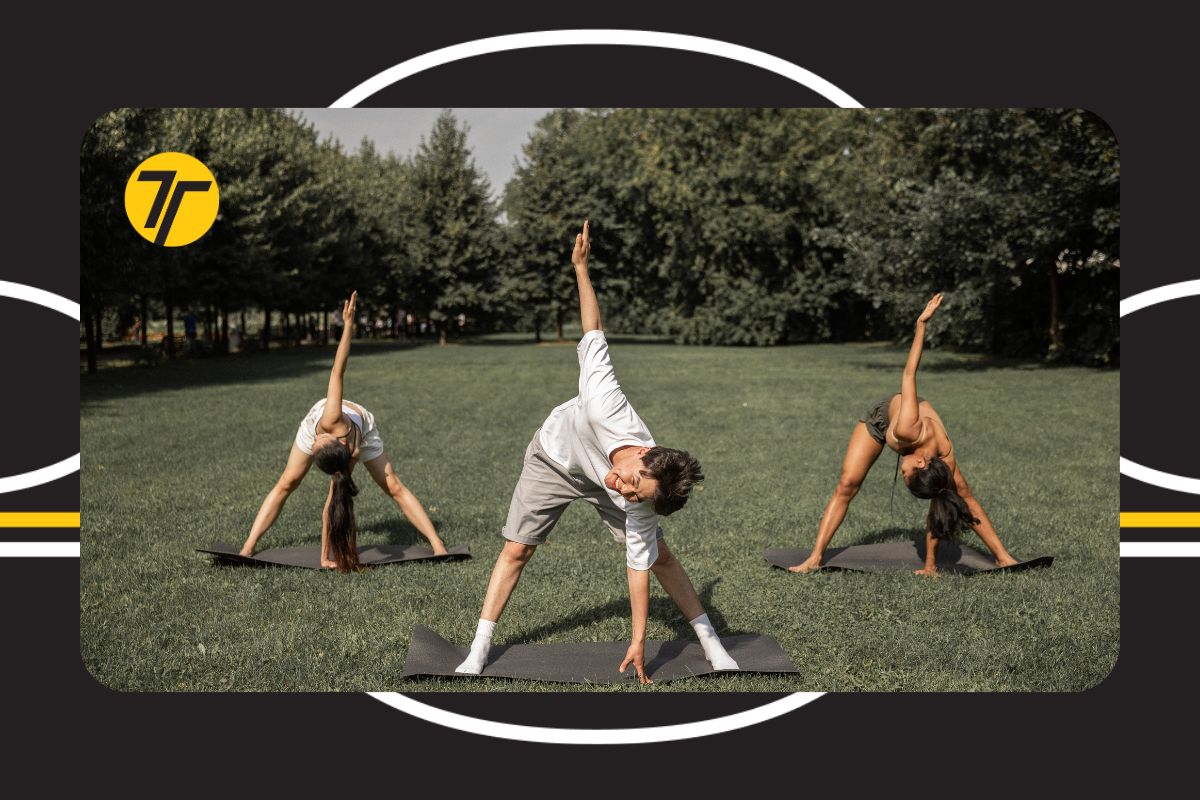
Are you ready to get more clients and expand your fitness business in 2024?
The global fitness industry has a near $100 billion market value and doesn’t show any signs of slowing down! With the continued popularity of digital fitness and online personal training, the world is your oyster, but how do you connect with interested clients?
Have you ever thought about running a fitness challenge? Or perhaps you’ve already run one but didn’t get the results you hoped for? That’s because you hadn’t yet read this ultimate guide to fitness challenges!
Keep reading for actionable tips and tricks to build a strategy that will take your challenges to the next level, help people reach their fitness goals, and ultimately (no pun intended!) grow your business.
Why Run a Fitness Challenge?
There is more than one reason to run a fitness challenge—and you probably know a lot of them already! There are reasons for you: create a campaign, create urgency, create group motivated, make new sales. And there are reasons for your clients: kickstart a new routine, prepare for a big event, create some accountability.
When planning your challenge, define clear goals for both your clients and your business—because both will benefit from a well-run challenge.
What’s the goal for your clients? You may promote the challenge to help them with:
- Weight loss
- Changes in body composition
- Strength training
- Staying consistent with their workouts
- Building habits
- Mental health
These are only a few ideas. For more, sit down and assess your clients to see where they are struggling. Or think about the type of client you want to attract. Which types of client goals are your training style best suited to help with?
While an underlying goal for your business is always to attract new clients, this won’t necessarily be your #1 goal in running a fitness challenge. Perhaps you want to build a better fitness community or increase engagement among current clients.
Regardless, before designing your challenge, sit down and figure out the goals for both your
clients and your business. Then, keep them in mind while you plan. Here are a few secondary outcomes that may come from your challenge.
Motivation
An important aspect of a trainer’s job from a client’s point of view is motivation. After all, with the wealth of exercise videos, online info, and fitness technology available, a motivated person can accomplish a lot on their own. And challenges are a great way to build that motivation.
But people still hire personal trainers, even online ones that won’t be physically present with them. Why? In part, it’s because trainers can serve as their personal cheerleaders on the days when they need an extra push (although we all know your job entails far more!).
A well-executed fitness challenge is an excellent way to help clients develop healthy habits and new routines that will push them towards their goals. Plus, the time limitations of a challenge create urgency for a task that’s always on their to-do list.
Retention
Looking for a way to refresh your current client’s routines? Waning interest can sometimes encourage clients to look elsewhere for fitness advice. A fun fitness challenge kicks the boredom and keeps current clients interested to see what you have coming next.
Try to plan the next challenge in the near future so that there’s always new urgency added to keep them coming back for more!
Leads and sales
Fitness challenges are a great way to attract interest in your fitness programs. Get as many people to sign up for your challenges as possible. If they like your challenge and see good results, they may be encouraged enough to sign on as a client!
Advertise using free or paid social media ads to build hype before you begin the challenge. Post before and after photos with client success stories, post teaser information, and create urgency by mentioning there are only a few spots left.
Engagement
We call ABC Trainerize a client engagement tool—it’s a way to create regular touchpoints and check-ins to build people’s commitment to their fitness journeys. Running a challenge with regular workouts, check-ins, and goal completions means stronger engagement and more reason for them to interact with you!
Finally, fitness challenges are just plain fun and a great way to build community. Set up an online group through ABC Trainerize’s group messaging feature or on Facebook. People can help motivate and encourage one another by sharing tips, advice, and experiences. People are social creatures — let them be social!
Check out: TRAINERIZE UPDATE | Elevate your Coaching with Challenges
Types of Fitness Challenges
There are a number of different types of fitness challenges that you can run. Certain types will better suit your clientele or your training style. Of course, you can also run many different types of challenges over time, giving your clients variety.
A few common types include:
- Boot camp: challenge your clients to a comprehensive workout 2-3 times a week
- Online leaderboard: run a virtual challenge solely online where individuals can compete against one-another
- In-person: challenge participants to a class in your fitness studio once a week
- Social media: have participants post progress pictures and share advice and pointers—or even tackle a daily TikTok trend!
- Bingo: offer incentives for completing tasks and activities that fill a bingo scorecard
- Checklist: create a checklist of activities that participants must complete
- Every-day-for-a-month: challenge your participants to do one activity or task every day for a month
- Goal-focused: set a specific goal for participants to work toward—like completing a certain number of pull-ups or finishing a set number of workouts
- Team-focused: challenge participants to reach team-oriented goals or pit them against each other in competitions
- Individual: custom fitness challenges for specific clients where they see progress
Keep in mind that a fitness challenge can be anything—habits and nutrition-based, too! We tend to think of them in terms of physical activity and exercise, but there are other options. For example, challenging your clients to try new foods, hit their nutrition goals 6 out of 7 days a week, or drink a certain amount of water every day. You can also use habit coaching to challenge clients to daily healthy habits.
How to Enhance Fitness Challenges
No matter what kind of fitness challenges you end up running, there are some key elements you can use to take them to another level. The more engaging (and fun!) they are, the quicker your clients will be to embrace them.
Personalization and client-centric approach
To make your fitness challenge truly resonate with participants, consider personalizing the experience. Tailor challenges to individual client needs and preferences. Incorporate surveys or consultations to understand their specific goals, ensuring a more personalized and effective journey. This client-centric approach not only boosts engagement but also fosters a deeper connection between trainers and participants.
Holistic wellness challenges
Expand the scope of your challenges beyond traditional fitness. Consider integrating aspects of holistic wellness, including mindfulness exercises, stress management techniques, and nutritional guidance. This not only aligns with the growing trend towards overall well-being but also addresses the interconnected nature of physical and mental health. Such comprehensive challenges can attract a diverse audience with varying wellness goals.
Gamification and rewards
Infuse an element of gamification into your challenges by incorporating point systems, badges, or milestones. Create a sense of friendly competition and reward participants for their achievements. Recognition not only boosts motivation but also cultivates a positive and competitive community spirit. Consider partnering with local businesses for sponsorship, offering enticing rewards for top-performing participants, further enhancing the challenge’s appeal.
Social impact challenges
Elevate the impact of your fitness challenges by incorporating a social or charitable component. Design challenges that encourage participants to contribute to a collective goal, such as a charity run or community fitness event. Not only does this foster a sense of purpose, but it also aligns your fitness business with social responsibility, attracting participants who value community engagement.
Best Practices for Effective Fitness Challenges
If you’re going to put all this work into running and marketing a fitness challenge, it’s got to be good. A sloppy, hastily thrown-together challenge won’t inspire anyone to sign on with you as a client.
Here are a few tips to get you started.
Communication tactics
Figure out how you’re going to deliver the challenge. Email is a good choice as you can send information directly to each client and know they’ve received it. Plus, it helps you to grow your email list.
ABC Trainerize Groups is a great option—it’ll create community in a dedicate space and train your clients to use the software, which will pay off after the challenge completes.
However, you’re choosing to facilitate and communicate the challenge, make lots of space for it to be a dialogue—check in, ask questions, keep them motivated!
Figure out your marketing comms plan too—where are you driving users? Use all the networks at your disposal to get people to sign up. We’re talking partners, website, social media, email, events, etc!
Sales tactics
First, the number one rule, don’t annoy people by overselling, whether by blasting them with too many promotions before the challenge or trying to get new clients to sign up too often during.
Give yourself time to create a buzz about your challenge beforehand, but don’t start so long before that people lose interest by the time you begin. About 3-4 weeks is a good amount of time. Post about your challenge and be sure to focus on what it will do for participants. Potential clients are only interested in how the challenge or services will benefit them.
As the challenge is coming to an end, offer your continuing services at a special price to the first x-number of challenge participants that sign up.
Pricing
Pricing your challenge is a delicate balance. Free challenges tend to be easier to get people to sign up for. However, if they have to pay, people will typically be more invested, and therefore are more likely to finish the challenge.
A small fee is often a good compromise. It won’t create a huge barrier to entry, yet it will help weed out the people who won’t finish. The fact that you get a small kickback for your time is also helpful.
You can also offer a two-week promotion for a four-week challenge. This is essentially half off, but starts them off “free” which may encourage them to give it a go off the bat—and once you win them over, they won’t have a problem paying for the second half.
Check out: The Ultimate Pricing Guide for Personal Trainers and Online Coaches
Organizational tactics
ABC Trainerize is an excellent tool for organizing your fitness challenges. You can create custom workout plans and upload meal ideas into each participant’s app. Participants can track their progress and you can check in on them to see how they’re doing. Participants can engage with each other directly in the app using the messaging feature.
If you like to put a pen to paper, try drawing a huge flow chart for the challenge on a whiteboard. Then, translate that into digital.
Get Started with Challenges on ABC Trainerize
Challenges are officially here!
And we’re here to help you think beyond traditional one-size-fits-all challenges. Instead, every rep, every meal, and every checked-off habit becomes a stepping stone towards your clients’ goals — all while infusing an element of fun, and healthy competition into their fitness journey!
Choose between leaderboard challenges where clients can compete with one another or set up challenges where everybody wins. Set the rules for how clients can earn points, such as completing a workout or hitting daily nutrition goals.
Then, enroll your clients into the challenge, patiently count down to the start of the challenge, and watch engagement soar!
Learn more about Challenges on ABC Trainerize here.


